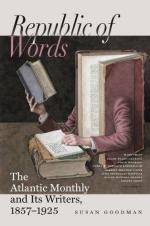The preceding passage is one of the many in the “Vita Nuova” which are of peculiar interest, as illustrating the personal tastes of Dante, and the common modes of his life. “I was drawing,” he says, “the figure of an Angel”; and this statement is the more noticeable, because Giotto, the man who set painting on its modern course, was not yet old enough to have exercised any influence upon Dante.[J] The friendship which afterwards existed between them had its beginning at a later period. At this time Cimabue still held the field. He often painted angels around the figures of the Virgin and her Child; and in his most famous picture, in the Church of Sta. Maria Novella, there are certain angels of which Vasari says, with truth, that, though painted in the Greek manner, they show an approach toward the modern style of drawing. These angels may well have seemed beautiful to eyes accustomed to the hard unnaturalness of earlier works. The love of Art pervaded Florence, and a nature so sensitive and so sympathetic as Dante’s could not but partake of it in the fullest measure. Art was then no adjunct of sentimentalism, no encourager of idleness. It was connected with all that was most serious and all that was most delightful in life. It is difficult, indeed, to realize the delight which it gave, and the earnestness with which it was followed at this period, when it seemed, as by a miracle, to fling off the winding-sheet which had long wrapped its stiffened limbs, and to come forth with new and unexampled life.
[Footnote J: In this year, 1291, Giotto was but fifteen years old, and probably a student with Cimabue. Benvenuto da Imola, who lectured publicly at Bologna on the Divina Commedia in the year 1378, reports, that, while Giotto, still a young man, was painting at Padua, Dante visited him. And Vasari says, that it was a tradition, that Giotto had painted, in a chapel at Naples, scenes out of the Apocalypse, from designs furnished him by the poet. If we may believe another tradition, which there seems indeed little reason to doubt, Giotto went to Ravenna during the last years of Dante’s life, that he might spend there some time in company with his exiled friend.]
The strength and the intelligence of Dante’s love of Art are shown in many beautiful passages and allusions in the “Divina Commedia.” There was something of universality, not only in his imagination, but also in his acquisitions. Of the sources of learning which were then open, there was not one which he had not visited; of the fountains of inspiration, not one out of which he had not drunk. All the arts—poetry, painting, sculpture, and music—were alike dear to him. His Canzoni were written to be sung; and one of the most charming scenes in the great poem is that in which is described his meeting with his friend Casella, the musician, who sang to him one of his own Canzoni so sweetly, that “the sweetness still within me sounds."[K]




